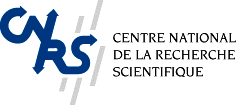
Uranus: Ground-based detection of the minor satellite Portia
Credit: Image courtesy of C. Dumas (Caltech/JPL), and J.-L. Beuzit & F. Ménard (CFHT)

Uranus, the Seventh Planet of our solar system, was discovered by
William Herschel in 1781. It is located at a mean distance of 2.7
billion kilometers and orbits the sun in 84 years. Uranus is the third
largest planet of the solar system, it is 15 times heavier and 4 times
larger in radius than the Earth. Despite its large size, it is barely
visible with the naked eye in a dark location (its V magnitude is
~5.7). Its main particularity comes from the fact that its rotation
axis is highly inclined with respect other Solar System
planets, lying almost in the plane of the ecliptic (~98 degrees
inclination of equator to orbit).
Similarly to the other giant planets Jupiter and Saturne, Uranus is surrounded
by a system of rings, at least 10 of them. But contrarily to the Saturnian
rings, the rings of Uranus are very narrow and their material is probably
confined in these narrow regions by small satellites orbiting at the inner
and outer edges of the rings.
Most of the information we have about Uranus' minor satellites and
rings come from the Voyager
2 spacecraft fly-by on January 24, 1986. The Hubble Space
telescope also recorded images of the Uranus system, but thanks to
Adaptive Optics, we can now routinely study the Uranian system in
great details from the ground.
This week's image shows Uranus in two near-infrared colours. The left
panel is an H-band image centered at 1.65 microns, in a region of the
spectrum where we can study the tropospheric aerosols over the planet.
The right panel shows a K-band negative image centered at 2.2
microns, in a region of the spectrum corresponding to the absorption
of methane . At this particular wavelength, the amount of scattered
light produced by the planet is greatly diminished, allowing
high-contrast imaging of the system of faint satellites and rings.
Uranus'
rings are visible, in silhouette in this negative K-band
image. They are better seen in this positive image, especially near the top and
bottom. Three rings are clearly visible, in particular the outermost
Epsilon ring.
Interestingly, the minor satellites
Puck and Portia are also detected in the K-band (right)
image. Portia's image is captured here unambiguously for the
first time from the ground! Its diameter is only 110km. Puck is only
barely larger than Portia, at 154km in diameter. Both satellites orbit
Uranus more than once a day. Also, the satellites Miranda and Ariel
are clearly visible. So far, 18 satellites of Uranus are known, and
the confirmation for 3 more is pending (2 of them also discovered at
CFHT!).
In the H-band image (left side), clouds in the upper atmosphere of the
planet are seen. They are the white streaks to the left of the
Planet. These clouds are located around the South Pole of Uranus!
Uranus's rotation axis is tilted by 90degrees, it is the only planet
of our solar system to behave like this. To convince yourself, compare
the orientation of the rings around Uranus, they are oriented
North-South in this image, with those of
Saturn or Neptune, oriented
East-West, shown in previous images of the week at CFHT.
Technical description:
These images were obtained with PUEO in August 1999 in the H- and
K-band filter. They are single 90sec frame. North is approximately up
and East to the left. The K-band image is presented in negative to
better enhance the presence of Portia and Puck. The Satellite Titania
was used as a reference for wave-front sensing. No image restoration
technique, such as deconvolution , has been applied to the image.



